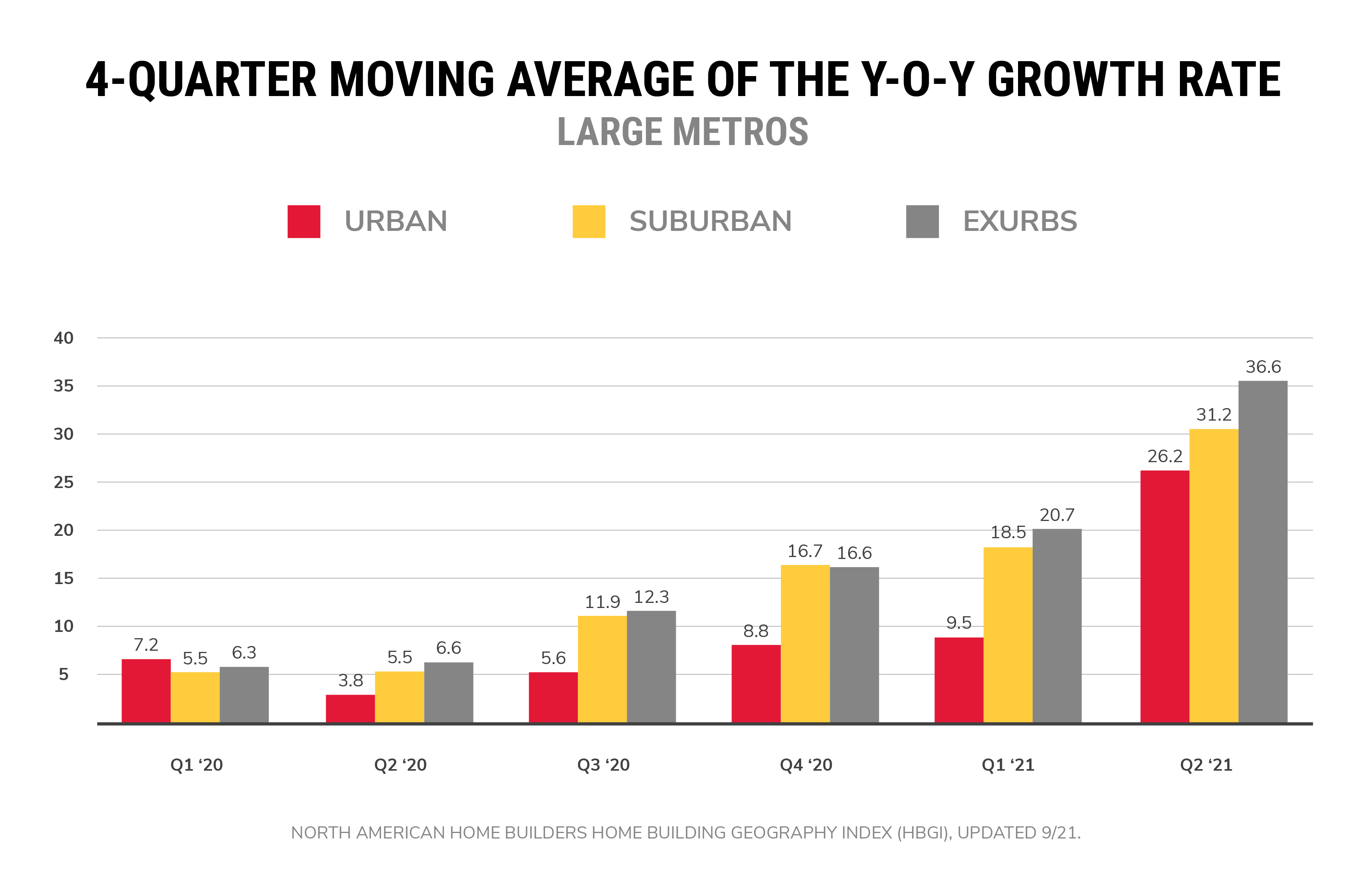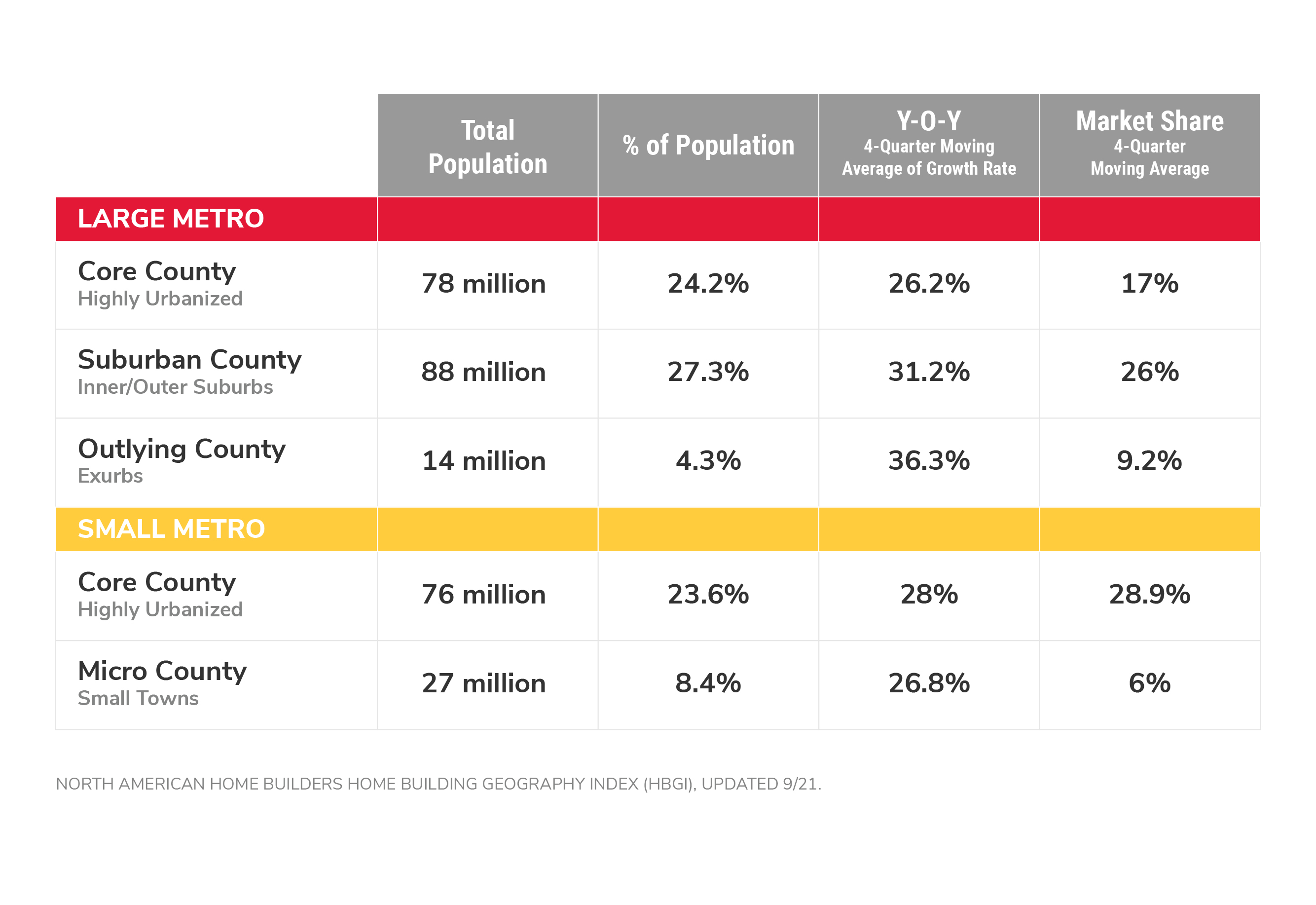Changing Values and Technology Make Exurb Living Desirable
According to the National Association of Home Builders, there is a 36.3% year-over-year growth of single family home building in exurbs outside of large metropolitan areas. This accounts for the highest year-over-year growth rate of all single-family geographic segments.
The exurbs sit outside not only a major metropolitan area but also the suburbs that are directly adjacent to the urban center in a region. Exurbs tend to be in more rural areas and are often near farmland or other undeveloped land.
While exurbs account for a low share of overall single-family U.S. households, the year-over-year rate of growth began to significantly increase in the 3rd quarter of 2020 during the height of COVID lockdowns. With more employees working from home, it has increased steadily ever since.

A Re-Evaluation of the Work-Life Balance
Working from home during an extended pandemic has rekindled the love affair between workers and their homes. For many, it has simplified life and forced a re-evaluation of priorities. Being remote for almost two years has made many workers realize there is a better way to balance a career with the pursuit of a fulfilling life and the responsibilities that come with it. Being home more means finding more time for both work and family pursuits, not to mention the practical savings on gas and childcare.
Many workers have awoken to the benefits of avoiding a congested daily commute and have put that new-found time to good use, making themselves more productive both at work and at home. Even if companies move back to a hybrid model, living in an exurb is still worth it. For many, the commute to work might only occupy two days of their week.
Technology Enabling Freedom
Technology has enabled an effective remote-work environment – for both the employee and employer. Video conferencing is now a norm, and not only for internal meetings. In many cases, customers, and clients have embraced working remotely with their sales and service vendors, leading to significant travel time and cost savings for both the customer and the vendor.
Increased capabilities with digital communication tools such as chats, screen sharing, virtual white boards, and project management have heightened the ability to collaborate remotely, making it possible to untether more often from the physical office. The pandemic significantly accelerated the rate of digital adoption by workers, making them far less reliant on face-to-face interaction, in-office tools, and conference rooms. We now have a skilled digital workforce who (for the most part) prefers to work remotely, freeing them from residing close to the physical office.
Rising Suburban Residential Home Demand and Prices
Residential new construction is on fire. Existing housing inventory is limited. Both have contributed to inflated prices in the suburbs. Add in a higher real estate and school tax structure for most suburbs, and a home in the exurbs becomes much more attractive as you get much more home value for the money. Many homebuyers are willing to balance this savings against a possibility that the quality of schools might not be as great., especially when the tax savings can be put toward private school offerings.
Infrastructure Bill Provides the Impetus for Further Growth
The recent passing of the infrastructure bill means much improved internet access in exurb and rural areas, as well as new road and rail systems to make travel much easier. The impact of this investment makes it easier for homebuilders and developers to identify and invest in communities further out on the grid.
Let’s talk.
Have a specific marketing challenge? Looking for a new agency?
We’d love to hear from you.
